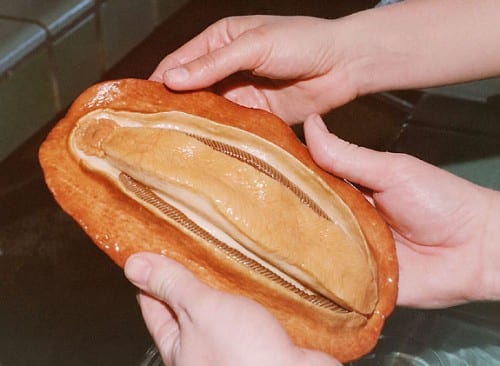The chiton is an invertebrate animal from the mollusk system, which in order to survive needs to continuously grow strong teeth. Understanding the process can contribute to improving the efficiency of solar panels and lithium batteries

By: Ofir Marom
The chiton (scientific name: Chiton) is a flat and wide marine mollusc, which has armor plates on the top, while the bottom is soft and muscular, a fact that allows it to stick to rocks. During evolution, this animal adapted itself to eating algae growing on rock surfaces and in crevices. In order to harvest its food, the chiton developed a special organ called the radula, which is a conveyor belt-like structure that contains 70-80 parallel rows of teeth. During eating, the first rows of teeth are used to grind rocks to reach the algae. These teeth wear out, but they are replaced by new teeth that are formed regularly and at a rate similar to the rate of wear.
From the rich variety offered by the beaches of California, home of the laboratory for biomimetics and nanomaterials, Professor David Kisailus finds inspiration for building new nanometer structures. We previously told here about his findings regarding the structure of the mantis mantis arms and their possible uses.
In his search for wear-resistant materials, Prof. Kisalios chose to investigate the way in which the teeth of the chiton grow.
In a recently published article, it was found that the process in which the gumboot chiton (a certain species of the chiton) grows its teeth occurs in three typical stages. Initially, crystals of iron oxide (hydrated iron oxide) form along a fiber-like pattern made of chitin (composite sugar). In the second stage, the structure of the crystals changes and becomes a magnetite type material. Finally, the magnetite particles begin to grow along the organic fibers, until parallel rods are formed inside the adult teeth - which makes them especially hard. According to Prof. Kisalios, these insights can be used to direct the growth of the minerals needed to build solar cells and lithium batteries. By controlling the size, shape and orientation of the engineered nanocrystals, he believes it is possible to build materials that will allow solar cells and lithium batteries to operate more efficiently. In addition, the imitation of the biomineralization process used by the chiton will allow the growth of nanocrystals at relatively low temperatures for the growth of nanocrystals, thus, similar to many biomimetic processes, saving energy and financial costs will be possible.

3 תגובות
Bektana - AALT Hebrew transliteration Tsel Chiton (B-XNUMX and not B-T)
You forgot to mention that the non-scientific name of the above creature is vagina dentata.
My God when I looked at the picture I was sure it was a hot dog bun.